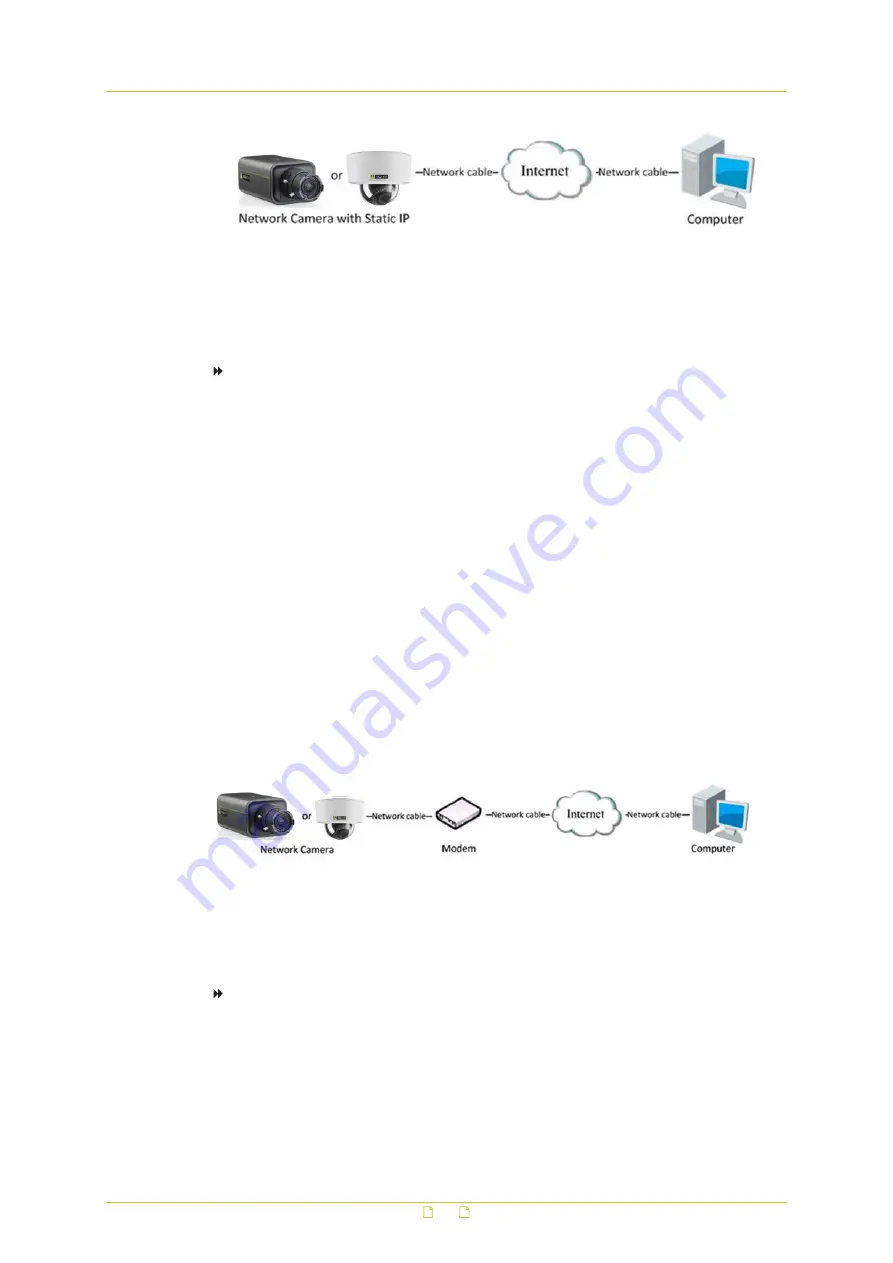
Dynamic IP connection
Before you start, obtain a dynamic IP address from an Internet Service Provider (ISP). With
the dynamic IP address, you can connect the network camera via a modem or a router.
To connect the network camera via a router
1
Establish a connection between the network camera and the router.
2
On the camera, assign a LAN IP address, subnet mask and gateway address.
For more information about the IP address configuration of the camera, see Connect the
camera to a LAN.
3
In the router, set the PPPoE user name, password and confirm the password.
4
Set the port mapping.
Use 80, 8000, and 554 as ports, for example.
The steps for port mapping vary according to the different routers. If necessary, contact
the router manufacturer for assistance with port mapping.
5
Apply a domain name from a domain name provider.
6
Configure the DDNS settings in the setting interface of the router.
7
Visit the camera via the applied domain name.
Connect the network camera via a modem
This camera supports the PPPoE auto dial-up function. The camera gets a public IP address by
ADSL dial-up after the camera is connected to a modem. You need to configure the PPPoE
parameters of the network camera.
The obtained IP address is dynamically assigned via PPPoE, so the IP address always changes
after rebooting the camera. To solve the inconvenience of the dynamic IP, you need to get a
domain name from the DDNS provider (for example, DynDys.com). Follow the steps below to
set a normal domain name resolution and a private domain name resolution to solve the
problem.
To set normal domain name resolution
1
Apply a domain name from a domain name provider.
2
On the DDNS tab of the Network page in the camera, configure the DDNS settings.
3
Visit the camera via the applied domain name.
Connect to network
15






























